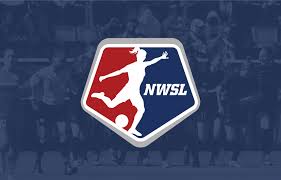August 23 – Women’s football in the US has made landmark changes to its player contract agreements with the NWSL Players Association and NWSL having reached a new collective bargaining agreement (CBA) that will include revenue sharing and the abolishing of the college draft, a peculiarity of the US pro sports market.
“We saw this midterm, voluntary negotiation as an opportunity to expand on the rights and protections that we set the foundation for in our first CBA in 2022,” said NWSLPA Executive Director Meghann Burke.
“This new deal achieves that. Players drew a clear, firm line that now is the time to accomplish what some have said could never be done.”
Under the new CBA revenue sharing with players will be linked to prior year sponsorship and media rights agreements and added to each team’s salary cap. The revenue sharing will be on top of the players’ base salaries, ensuring the money goes into the players’ pockets.
The 2024 club salary cap remains unchanged at $2.75 million, but will rise to $3.3 million in 2025, $3.5 million in 2026, $4.4 million in 2027, $4.7 million in 2028, $4.9 million in 2029 and $5.1 million in 2030.
Minimum salary will be $48,500 in 2025, and will rise to $82,500 in 2030. There is no maximum salary, which will allow the NWSL clubs to compete for talent internationally against bigger spending clubs in Europe and Mexico.
From 2027 competition bonuses for players on NWSL Shield or Championship winning teams will double, as will the bonuses for those who make the league’s Best 11. The bonus for the NWSL MVP will quadruple.
Other changes include teams now allowed to use charter aircraft for three round trips and a requirement to charter for “certain midweek games”, a guaranteed minimum of 28 days off during the offseason, and a midseason break built into the schedule.
The biggest change affecting the norms of the US sports market is the scrapping of the college draft system – something that all other major league sports in the US rely on for player recruitment.
Its abolishment for the women’s game acknowledges the differences of the talent development processes in football where the most talented players are already with clubs long before college decisions are made.
“The draft is an antiquated model that empowers teams to decide for players instead of players deciding for themselves,” said NWSLPA President Tori Huster in a press release. “Now, players can choose the team environment that fits their needs and maximizes their opportunities. Teams will need to step up to create environments that appeal to players.”
For college players transitioning into the professional game they will now be able to choose their teams and locations to suit their personal needs, rather than be assigned draft picks.
Contact the writer of this story at moc.l1751522885labto1751522885ofdlr1751522885owedi1751522885sni@n1751522885osloh1751522885cin.l1751522885uap1751522885

